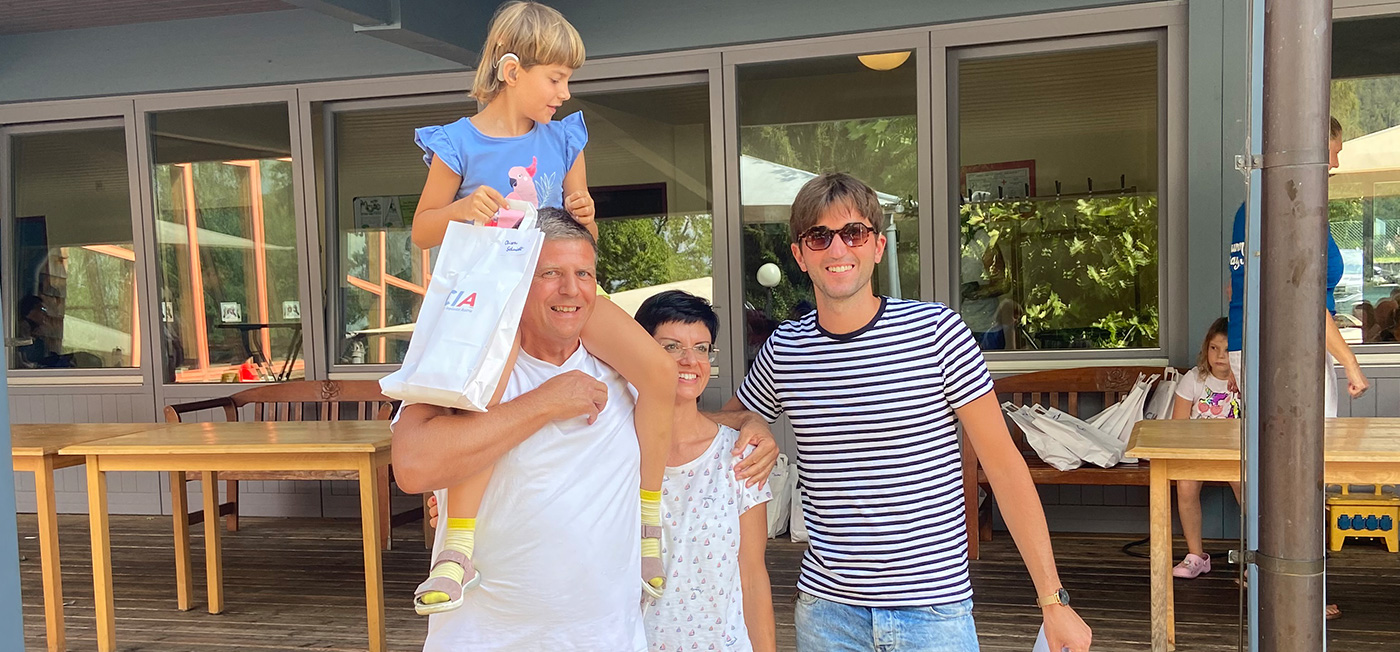HEARING IMPLANTS
EAS
Electro-acoustic stimulation (EAS) systems are designed for specific problems hearing high-pitched sounds and understanding speech (although low pitches can still be heard) – problems that characterize high-frequency sensorineural hearing loss. EAS stimulates the cochlea for high-pitched sounds and amplifies the low- pitched sounds by using hearing aid technology, thus enabling the user to hear the full range of sounds while preserving the still existing hearing.

OUR RECOMMENDATIONS
EAS systems recommendations
The cochlear implant used in MED-EL EAS systems called SYNCHRONY is an absolute favourite of our cochlear implant users!
SYNCHRONY cochlear implants by MED-EL have shown great performance and reliability, which is why our CIA members simply love them. The SYNCHRONY differentiates itself from other systems through the natural sound experience it provides and through its atraumatic electrode arrays which are customized for each user to offer the ideal solution for everyone.
Most natural hearing experience thanks to innovative technology
Adaptability to future developments
MRI safety up to 3.0 Tesla
For cochlear implant candidates, reliability and safety are key criteria when choosing the implant as the implant is the part of the hearing system that will be inside the patient´s body for years. MED-EL implants have been manufactured in Innsbruck, Austria, for 30 years in compliance with the strictest quality control standards.

The SONNET EAS is an audio processor especially designed for Electric Acoustic Stimulation (EAS), i.e. to fit both the cochlear implant and the hearing aid technology. It picks up the sounds and sends them to both the system for low and the system for high pitched sounds.
Adapts to the environment you are in
Reduces background noise
Offers natural hearing experience thanks to innovative sound coding technology
Additionally, this audio processor comes with many modern options that bring joy, such as simple, wireless streaming options to enjoy music or phone calls in high quality. It is waterproof, has a long-lasting battery and comes with many modern design options.

RECOMMENDED ARTICLES
Read fascinating stories
about EAS!
Dr Christian Schmidt MBA, a father of a child with a CI, describes which factors were decisive for him and his wife when choosing a CI system for their daughter.
How well the school will go for children with cochlear implants depends on several factors. The persistence of the parents is one of them.
While university professor Dr.Florian Eibensteiner was suffering from unilateral deafness which resulted from mumps disease, one of his former students was developing better connection options for CI audio processors.
After a rare disease called neurofibromatoses that affected her hearing, Elena-Daniela Nistor can hear again thanks to a brainstem implant.
After health problems, mental training has not only helped Mag. Peter Kmetyko return to the top with his bike, but it has also helped him cope better with hearing problems and learn to live with his BONEBRIDGE implant.
Dr. Ruth Zöhrer studied medicine and has a PhD in biology. Today, she is involved in studies that measure, among other things, how hearing implants affect the quality of life of the CI users.
Patrick Beganovic recalls of his daughter Maja's diagnosis - profound hearing loss. Thanks to cochlear implantation at the Linz University Hospital, the family is now happy to hear Maja's first words.
We focus on the town of Bethleem at the turn of each year. However, we do not know much about life with hearing loss in Palestine.
In order to listen to music with better sound quality, Karl-Heinz Fuchs even gave up five percent speech intelligibility when setting the TEMPO+ processor.
Tahlita from South Africa spent the best day of her life right in the middle of the Corona-crisis. Her mother Bianca Birdsey explains how it happened.
Read the stories from the bilateral CI users and their personal experience and comparison of cochlear implants.
People with hearing implants often need help when they are in the hospital or in nursing home. Find out more on early and good preparation.
COVID-19 infection can impact the lives and hearing of those affected. Two people describe their experience.
US nurse Alley Mason works in the intensive care department of a clinic in Texas and is a cochlear implant user.
What is life at a distance actually like for people with hearing impairments?
An insight into why binaural hearing and music complement each other, lead to better speech understanding and why together is better than alone.
Brigitte is so satisfied with her cochlear implant that she now wants one for her other ear. It was not always like this.
Sabine Weinberger-Pramendorfer is extremely satisfied cochlear implant user and wants to encourage candidates to go for it.
For seven years, 13-year-old Valentin from Austria could only hear in one ear. While his hearing loss remained undetected for a long time...
Hobby musician Walter Widler (CI user) talks about his life-long passion for music.
Music is clearly an important subject for young CI users: it communicates moods and feelings and helps in dealing with these.





















